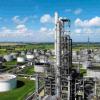Hello,
I work as a process engineer in a refinery. We are trying to extend and improve our current atmosferic and vacuum tower simulations with HYSYS.
We have been able to predict and compare the volumetric performance of our model with the the real data of our plant. So far the model's volumetric flows fall within 0.4 or 2% error for almost all the products (list below)
Unfortunately we have not been able to reconcile the performance of ours heavy products (Pitch and Topped crude oil). They both have an error of 4%
LPG
Gasoline
Naftha
Kerosene
Diesel
AGO
HGO
LGO
Pitch
Topped crude oil
As expected, when we arbitrarily raise the temperature of the inlet (fresh) crude to the atmosferic tower, the heavy product's performance seems to show a better agreement with operational data.
Is this error acceptable? What could be the problem and how can it be fixed?
Any help is welcomed =)
Thank you very much
Edited by tgugcl, 22 March 2018 - 04:27 PM.

 FB
FB













